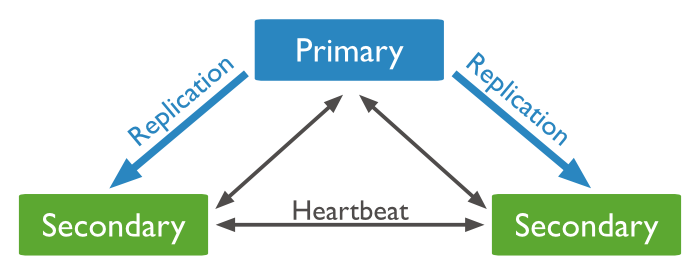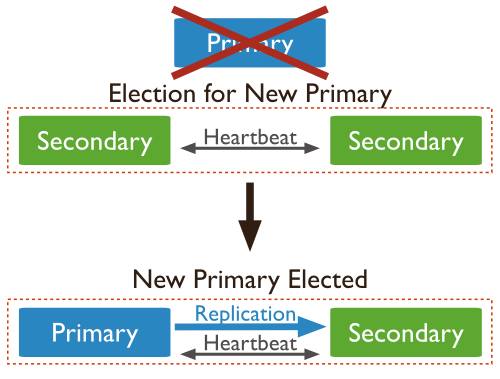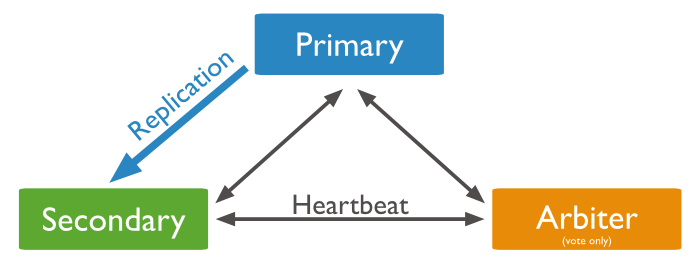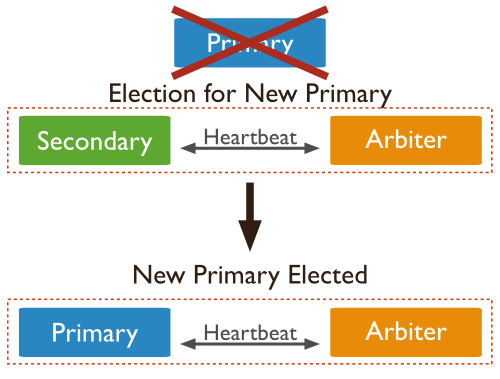- Replication >
- Replication Concepts >
- Replica Set Deployment Architectures >
- Three Member Replica Sets
Three Member Replica Sets¶
The minimum architecture of a replica set has three members. A three member replica set can have either three members that hold data, or two members that hold data and an arbiter.
Primary with Two Secondary Members¶
A replica set with three members that store data has:

These deployments provide two complete copies of the data set at all times in addition to the primary. These replica sets provide additional fault tolerance and high availability. If the primary is unavailable, the replica set elects a secondary to be primary and continues normal operation. The old primary rejoins the set when available.

Primary with a Secondary and an Arbiter¶
A three member replica set with a two members that store data has:
- One primary.
- One secondary member. The secondary can become primary in an election.
- One arbiter. The arbiter only votes in elections.

Since the arbiter does not hold a copy of the data, these deployments provides only one complete copy of the data. Arbiters require fewer resources, at the expense of more limited redundancy and fault tolerance.
However, a deployment with a primary, secondary, and an arbiter ensures that a replica set remains available if the primary or the secondary is unavailable. If the primary is unavailable, the replica set will elect the secondary to be primary.

See also
Thank you for your feedback!
We're sorry! You can Report a Problem to help us improve this page.
